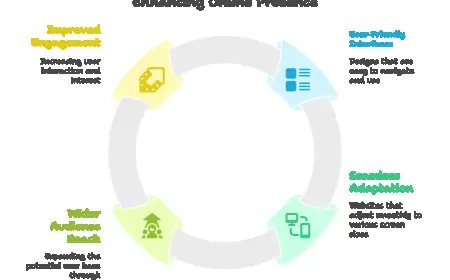Flutter Pros and Cons: Should You Use It in 2025?
Explore the pros and cons of Flutter in 2025. Discover if Google's UI toolkit is the right choice for your cross-platform app development strategy.

In the ever-evolving landscape of mobile, web, and desktop application development, choosing the right framework is paramount for success. As we navigate 2025, Flutter, Google's open-source UI toolkit, continues to solidify its position as a front-runner for cross-platform development. Its promise of "write once, deploy everywhere" holds immense appeal for businesses aiming for efficiency and broader market reach. But does Flutter truly live up to the hype, and is it the ideal choice for your projects in the coming year? This comprehensive article dives deep into Flutter's strengths and weaknesses, providing actionable insights for CTOs, product managers, and business owners to make informed decisions for their long-term technology strategies.
The Rise of a Unifying Force: Why Flutter Captivates
Flutter has experienced a meteoric rise since its inception, largely due to its ability to streamline development across multiple platforms. Unlike traditional approaches that require separate codebases for iOS, Android, web, and desktop, Flutter empowers developers to build natively compiled applications from a single codebase. This not only significantly reduces development time and costs but also ensures visual consistency and a unified user experience across diverse devices.
A key differentiator for Flutter is its unique rendering engine, Impeller (now the default on iOS, and a fallback for Android with OpenGLES). This engine provides pixel-perfect control over every UI element, allowing for highly customized and visually stunning applications that truly stand out. This level of graphical fidelity and smooth animation, often achieving 60-120 FPS, is a significant advantage, particularly for applications where rich user interfaces are crucial for engagement. The ease with which developers can create complex UIs using Flutter's extensive widget library, adhering to both Material Design and Cupertino (iOS) standards, makes it a powerful tool for delivering exceptional user experiences.
The Accelerating Advantages: Flutter's Enduring Strengths
Flutter's strengths extend far beyond its cross-platform capabilities, offering a compelling array of benefits for businesses and development teams in 2025:
-
Blazing Fast Development Cycles:
-
Hot Reload and Hot Restart: These features are game-changers for developer productivity. Hot Reload allows developers to see the immediate effects of code changes without restarting the application, significantly accelerating the iteration process. Hot Restart, while reloading the entire application, is still much faster than a full native build cycle.
-
Rich Widget Catalog: Flutter's comprehensive, customizable widget library allows developers to build complex UIs with remarkable speed. These pre-built, high-performance widgets eliminate the need to create every UI component from scratch, further reducing development time.
-
Single Codebase Efficiency: The core advantage of writing one codebase for multiple platforms directly translates to faster time-to-market. According to a 2024 CTO Report by LeanCode, 56.4% of respondents stated that Flutter development is more than 50% faster than native technologies, while 24.8% claimed it's at least 20% quicker. This efficiency is a massive draw for startups and enterprises alike.
-
-
Exceptional UI/UX Capabilities:
-
Native-like Performance and Aesthetics: Flutter compiles directly to native ARM code, enabling near-native performance. Its rendering engine ensures that applications look and feel consistent across different platforms, providing a truly native-like experience without the complexities of platform-specific development.
-
Unrivaled Customization: Flutter's widget-based architecture provides unparalleled flexibility for UI customization. Developers can create unique, branded experiences that precisely match design specifications, ensuring a distinctive presence in competitive markets.
-
Responsive Design and Adaptability: Flutter offers robust tools for building adaptive and responsive UIs, ensuring optimal display and functionality across various screen sizes, resolutions, and orientations, from mobile phones to large desktop monitors.
-
-
A Maturing and Supportive Ecosystem:
-
Google's Strong Backing: Google's continuous investment in Flutter, including its integration with Firebase and Google Cloud services, signals a strong long-term commitment to the framework. Google I/O 2024 presentations indicated 14 new integration points planned for release by mid-2025, further enhancing Flutter's capabilities.
-
Vibrant Community and Resources: Flutter boasts a rapidly growing and highly active developer community. This translates into abundant online resources, tutorials, third-party packages, and robust community support, making it easier for developers to find solutions and best practices.
-
Tooling Excellence: Flutter DevTools provides a powerful suite of debugging and performance profiling tools, including a widget inspector, CPU profiler, and memory profiler. These tools empower developers to identify and resolve issues efficiently, contributing to a smoother development workflow.
-
For businesses looking to quickly launch a minimum viable product (MVP) or expand their reach across various platforms with a cohesive user experience, the advantages of Flutter are incredibly compelling. This is particularly true if you hire dedicated Flutter developers who possess expertise in leveraging these strengths to their fullest potential.
The Roadblocks and Considerations: Understanding Flutter's Downsides
While Flutter offers numerous benefits, it is crucial to acknowledge its limitations and challenges, particularly for long-term strategic planning in 2025:
-
App Size Concerns:
-
Flutter applications tend to have a larger binary size compared to native apps. This is due to the inclusion of the Flutter engine and necessary libraries within each app package. While Google is continuously working on reducing app footprint through modular architecture, this can still be a consideration for users with limited storage space or slow internet connections.
-
For very simple applications, the initial overhead of the Flutter engine might make native development a more lightweight option. However, as app complexity grows, Flutter's code reusability often outweighs the initial size difference.
-
-
Platform-Specific Nuances and Integrations:
-
While Flutter strives for a consistent look and feel, achieving a truly "pixel-perfect" native aesthetic across all platforms can sometimes be challenging, especially for highly platform-specific design guidelines. This might require additional effort to integrate with specific native components or to fine-tune the UI to match platform conventions precisely.
-
Accessing highly specialized or nascent platform-specific features (e.g., advanced ARKit/HealthKit functionalities, very niche Bluetooth operations) might require writing platform-specific code via "platform channels." While feasible, this can add complexity and require a deeper understanding of native development.
-
-
Talent Pool and Learning Curve:
-
Although the Flutter developer community is growing rapidly, the pool of experienced hire dedicated Flutter developers might still be smaller compared to more established native or even React Native ecosystems. LinkedIn's 2024 Emerging Jobs Report indicated approximately 1.4 React Native developers for every Flutter developer.
-
Dart, the programming language used by Flutter, has a relatively gentle learning curve for developers familiar with object-oriented languages. However, for teams entirely new to Dart and Flutter's reactive, widget-based paradigm, there will be an initial ramp-up period.
-
-
Maturity of Third-Party Libraries:
-
While Flutter's ecosystem is expanding rapidly with a good selection of plugins, it is still relatively newer than the vast repositories available for native Android (Java/Kotlin) and iOS (Swift/Objective-C) development. This might occasionally lead to fewer mature or less comprehensive third-party libraries for highly specific functionalities. However, the community actively addresses these gaps, and many essential functionalities are well-covered.
-
CTOs and product managers must weigh these considerations against the overall benefits. For most standard business applications, Flutter's advantages heavily outweigh these drawbacks, but for highly specialized applications requiring deep, bleeding-edge native integration, a thorough analysis is essential.
Expert Voices & Consensus: What Leaders Are Saying in 2025
The consensus among technology leaders and industry experts in 2025 points to Flutter as a robust and increasingly mature framework. The 2024 Stack Overflow Developer Survey, a widely respected indicator of developer preferences, highlights Flutter's strong position, with Flutter and React Native accounting for 60% of all cross-platform mobile projects (Flutter at 32.8% and React Native at 27.2%). This trend underscores the market's confidence in established frameworks with strong support.
Tim Sneath, former Director of Product for Flutter at Google, has consistently championed Flutter's ability to simplify cross-platform development, stating that "FlutterFlow [a low-code platform built on Flutter] provides tooling that helps real-world developers & users build apps using it - it's a straightforward, easy to use tool that can generate very powerful results. FlutterFlow brings the power of a rich platform to everybody." This sentiment is echoed by many tech leads who praise Flutter's development velocity and consistent UI rendering.
Real-World Success Stories:
Flutter's business adaptability is evident in its adoption by prominent companies across various sectors:
-
Tencent: The Chinese tech giant has adopted Flutter for several of its applications, showcasing its ability to handle large-scale, high-performance needs in a highly competitive market.
-
BMW: The automotive giant utilizes Flutter for its My BMW app, demonstrating Flutter's capability in building sophisticated, user-centric applications that integrate with complex systems. This highlights Flutter's suitability for enterprise-grade solutions where reliability and a seamless user experience are paramount.
-
Google Ads: As an internal Google product, Google Ads' use of Flutter serves as a powerful testament to the framework's stability, scalability, and performance for mission-critical applications.
-
Credit Agricole Bank: This banking institution has leveraged Flutter for its mobile applications, proving Flutter's capability in delivering secure, high-performing financial tools that meet stringent industry standards.
These success stories illustrate that Flutter is no longer just a "startup toolkit" but an enterprise-ready solution capable of delivering complex, scalable, and secure applications. When organizations decide to hire dedicated Flutter developers, they are investing in a technology proven by global leaders.
Strategic Imperatives: Actionable Insights for Decision-Makers
For CTOs, product managers, and business owners evaluating Flutter for long-term use in 2025, here are actionable insights and recommendations:
-
Prioritize Cross-Platform Consistency: If your strategic goal is to deliver a consistent brand experience across multiple platforms (iOS, Android, web, desktop) with a single development effort, Flutter stands out as a top contender. Its rendering engine ensures visual fidelity, saving significant design and QA time.
-
Assess Performance Requirements: For applications demanding high-performance UI, smooth animations, and a rich user experience, Flutter's compiled-to-native approach and Impeller engine offer significant advantages. Benchmark Flutter against native alternatives for your specific use cases, but generally, it delivers near-native performance.
-
Consider Time-to-Market: If rapid prototyping, quick iteration, and accelerated time-to-market are critical, Flutter's Hot Reload and extensive widget library can drastically reduce development cycles. This is particularly beneficial for MVPs and competitive market entry.
-
Evaluate Talent Acquisition Strategy: While the Flutter talent pool is growing, be prepared to invest in training existing teams or actively seeking experienced hire dedicated Flutter developers to maximize the framework's potential. The efficiency gained from Flutter often offsets the initial investment in talent.
-
Leverage the Ecosystem: Actively explore Flutter's extensive package ecosystem and its seamless integration with Google services like Firebase. This can accelerate backend development and simplify complex features like authentication, analytics, and push notifications.
-
Plan for Scalability and Maintainability: Flutter's strong state management solutions (e.g., Provider, Riverpod, Bloc) and clear architectural patterns promote clean, maintainable, and scalable codebases. Ensure your development team adheres to Flutter best practices for long-term project health.
-
Conduct a Pilot Project: For large enterprises with existing legacy systems, consider initiating a pilot project or integrating a Flutter module for a specific feature or screen within an existing native app. This incremental adoption path can help validate Flutter's fit without a complete rewrite.
By strategically considering these points, businesses can confidently assess whether Flutter aligns with their long-term technological vision and business objectives.
The Horizon Beckons: Flutter's Future in 2025 and Beyond
Flutter's roadmap for 2025 and beyond indicates a clear trajectory of continuous improvement and expansion. Key areas of focus include further performance optimizations, particularly with the Impeller rendering engine, enhancing accessibility features, and refining capabilities for web and desktop platforms. There's also a strong emphasis on deeper integration with AI and Machine Learning, signaling Flutter's ambition to stay at the forefront of technological advancements. The ongoing evolution of the Dart language itself, with a focus on stability and developer experience, further strengthens Flutter's foundation. Google's commitment and the vibrant community ensure that Flutter will remain a relevant and powerful tool for building diverse applications in the years to come.
Frequently Asked Questions (FAQs)
Q1: Is Flutter suitable for large-scale enterprise applications? A1: Absolutely. Prominent companies like BMW, Tencent, and Google Ads use Flutter for their enterprise-level applications, demonstrating its scalability, performance, and ability to handle complex requirements. Its unified codebase and robust ecosystem make it a strong choice for large businesses.
Q2: How does Flutter's performance compare to native app development in 2025? A2: Flutter compiles to native code and utilizes its own rendering engine (Impeller), achieving near-native performance. While a fully optimized native app might still have a marginal edge in highly resource-intensive scenarios, for most applications, Flutter provides smooth animations and a highly responsive user interface that is virtually indistinguishable from native.
Q3: What is the typical cost of developing a Flutter app in 2025? A3: The cost varies significantly based on complexity, features, and region. Simple Flutter apps can range from $15,000 to $60,000, while apps with middle complexity might cost between $60,000 and $120,000. Highly complex applications can go upwards of $120,000 to $200,000. The single codebase often leads to overall cost savings compared to developing separate native applications.
Q4: Is it difficult to find experienced Flutter developers in 2025? A4: While the Flutter talent pool is growing rapidly, it might be slightly smaller than more mature ecosystems like native Android or iOS. However, the demand for Flutter developers is high, and many skilled professionals are emerging. Businesses can effectively address this by partnering with development agencies or choosing to hire dedicated Flutter developers through specialized recruitment channels.
A Unified Future: Your Next Steps with Flutter
As we've explored, Flutter stands as a formidable contender in the 2025 application development landscape. Its blend of rapid development, stunning UI capabilities, and cross-platform efficiency presents a compelling value proposition for businesses aiming to innovate and expand their digital footprint. While no technology is without its nuances, Flutter's strengths, backed by Google's unwavering support and a thriving community, position it as a powerful and viable choice for a wide array of projects, from nascent startups to established enterprises. By carefully evaluating your project requirements and strategically leveraging Flutter's advantages, you can unlock significant development efficiencies and deliver exceptional user experiences.
Share Your Insights! Did this deep dive into Flutter's pros and cons resonate with your experiences, or do you have further insights to share? We encourage you to share this article with your network and contribute to the ongoing conversation about the future of cross-platform development.
What's Your Reaction?
 Like
0
Like
0
 Dislike
0
Dislike
0
 Love
0
Love
0
 Funny
0
Funny
0
 Angry
0
Angry
0
 Sad
0
Sad
0
 Wow
0
Wow
0

















































